If you are one of those people who loves seeing the planets with just the unaided eye (and really, who doesn’t?), then this month is going to be…well, out of this world. March of 2020 brings us 5 naked eye planets: Mercury, Venus, Mars, Jupiter, and Saturn. In addition to these worlds, I’ll throw in a challenge planet, one that will require a little bit of optical aid to see, the planet Uranus.
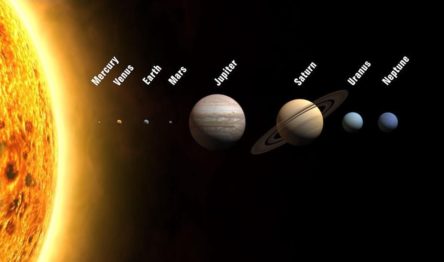
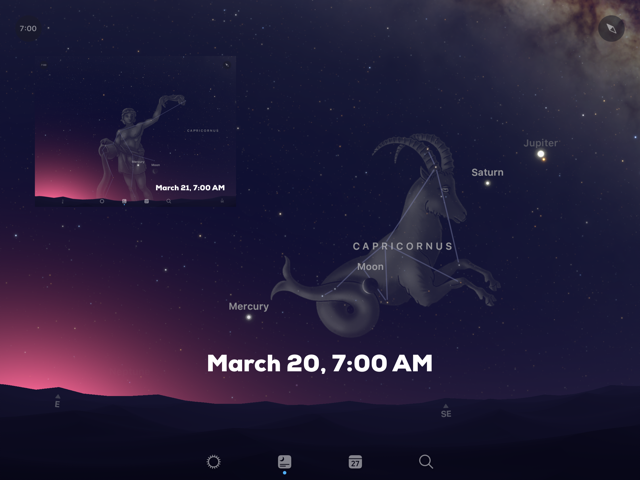 MERCURY
MERCURY
The innermost planet does not make an appearance until mid-month, when it climbs above the eastern horizon, about an hour before sunrise on March 10th. It will only be less than 10 degrees above the horizon so, very low and very difficult to spot. My advice is to try and see it on the mornings of March 20th and 21st, at around 7:00 AM, when a sliver crescent moon hangs just to the planet’s west. You will need to have an observing spot that affords you a clear view down to the horizon. A pair of binoculars might be of help too.
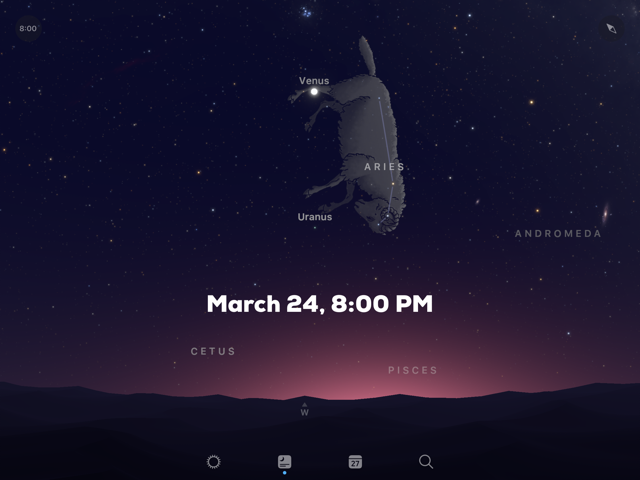 VENUS
VENUS
Venus has been putting on a spectacular display in the western sky since January, where it has been climbing steadily higher above the horizon before finally setting about 2 hours after sunset. It will continue doing so this month with the time interval between sunset and Venus-set stretching out to more than 4 hours. On the evening of March 24th, Venus will reach its greatest angular separation from the Sun (known as its “elongation”) during its evening appearance at 46.1 degrees from the Sun. The maximum that Venus can possibly reach is about 47 degrees. By mid-April, Venus will have climbed so high above the ecliptic, an imaginary line upon the sky that traces out the orbital plane of the moon and planets as we all go around the Sun, that it will not set until after midnight. It’s rare that we get to see Venus linger so long in our night sky.
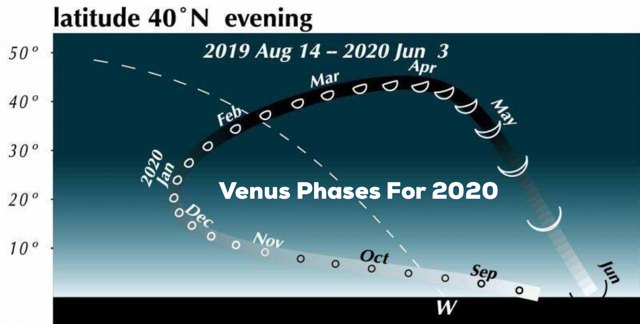
If you have access to a telescope, monitor Venus’s phases this month. You will see the disc grow from 19 arcminutes across to 25 or 26 arcminutes over the course of March. As you observe it over the month, you will also see it transform from a gibbous phase, being over 60% illuminated early on, to around 50% illuminated towards the end of March. By the end of April, Venus will have become a crescent. However, and perhaps somewhat counterintuitively, Venus will be increasing in brightness despite this waning of its phase. Why? Well, as the planet makes its trip around the Sun, it is now approaching us and, so, its overall disc size steadily increases, right along with its brilliance. By April 27th, you will see Venus reach its maximum brightness, shining at magnitude -4.7.
 On the evening of March 7th and 8th, use Venus to find the planet Uranus, located only 2 degrees (one degree is the width of your pinkie finger held out at arm’s length) to the east of Venus. Use a pair of binoculars or a small telescope to see if you can locate the ice giant planet. On the night of the 7th, you will see a single field star lying a bit closer to Venus than it does to Uranus. Extend a line out from Venus to the star, then extend that line about twice the Venus/field star distance until you come to Uranus. On the night of the 8th, you will see two field stars lying to the lower left of Venus. Keep going past them, in the same general direction, for twice that distance to find Uranus. The ice giant will be brighter than the field stars. In binoculars, the planet will appear as a star-like point, small telescopes will just begin to resolve it into a disc but you will likely need a magnification of it least 100x to see a disc shape. See if you can detect the planet’s pale blue color, which makes it stand out from any background stars. The blue color is the result of methane present in the ice giant’s atmosphere. Methane preferentially absorbs the redder parts of the Sun’s light and reflects back the bluer portions.
On the evening of March 7th and 8th, use Venus to find the planet Uranus, located only 2 degrees (one degree is the width of your pinkie finger held out at arm’s length) to the east of Venus. Use a pair of binoculars or a small telescope to see if you can locate the ice giant planet. On the night of the 7th, you will see a single field star lying a bit closer to Venus than it does to Uranus. Extend a line out from Venus to the star, then extend that line about twice the Venus/field star distance until you come to Uranus. On the night of the 8th, you will see two field stars lying to the lower left of Venus. Keep going past them, in the same general direction, for twice that distance to find Uranus. The ice giant will be brighter than the field stars. In binoculars, the planet will appear as a star-like point, small telescopes will just begin to resolve it into a disc but you will likely need a magnification of it least 100x to see a disc shape. See if you can detect the planet’s pale blue color, which makes it stand out from any background stars. The blue color is the result of methane present in the ice giant’s atmosphere. Methane preferentially absorbs the redder parts of the Sun’s light and reflects back the bluer portions.
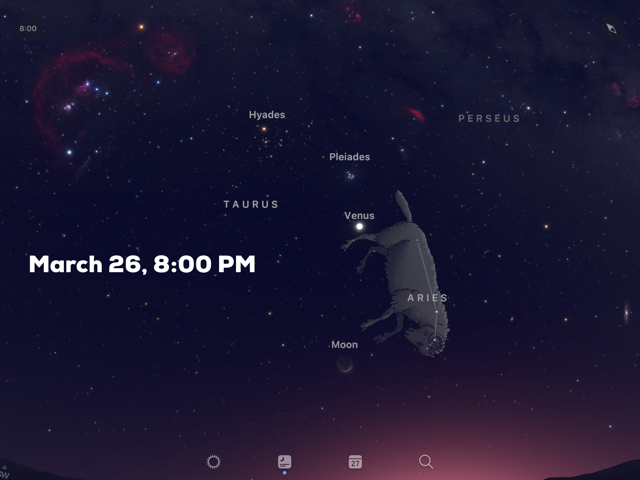
On March 26th, look for a very slender crescent moon below brilliant Venus. Over the next two nights, the waxing crescent sidles up alongside the planet in an even closer encounter, it will be a lovely sight and a great photo opportunity as well. Throughout the month, Venus has been loitering around in the constellation of Aries, but by month’s end, it will have wandered over into nearby Taurus.
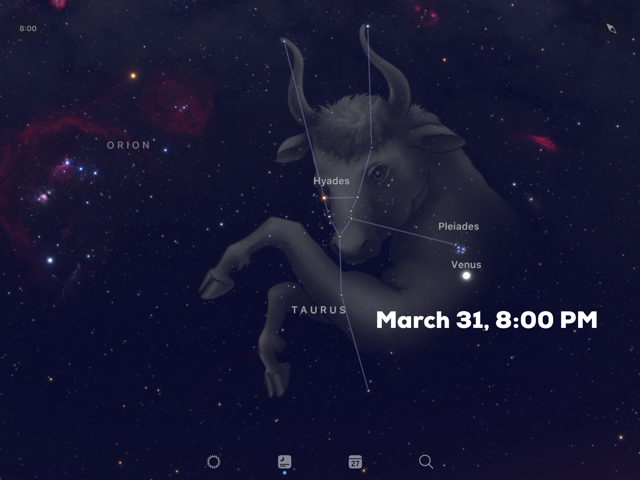
On March 31st, look for Venus just to the south of the open star cluster known as the Pleiades or, “The Seven Sisters”. On the night of April 3rd, the planet will be right in the middle of the star cluster. Well, not REALLY in the star cluster, the Pleiades lie some 17 light years away, while Venus is, on average, about 85 million miles away. These kinds of alignments are of course purely a line-of-sight effect, but what a sight!
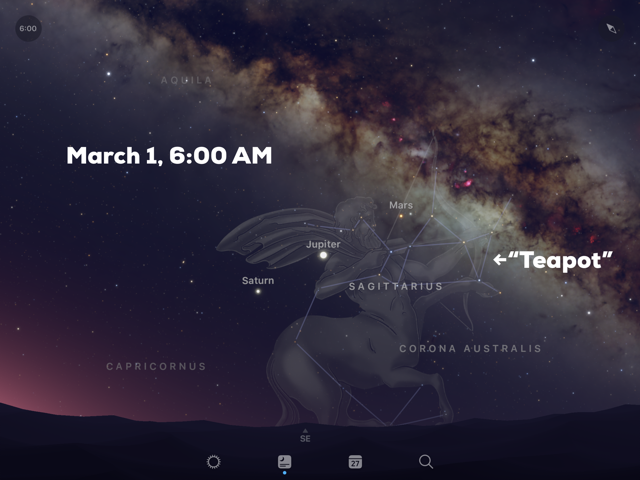 MARS, JUPITER, SATURN
MARS, JUPITER, SATURN
You’ll have to get up before sunrise this month to catch all three of the other planets on our list. For most of March, from east to west, you can see Saturn, Jupiter, and Mars (in that order) all lined up just to the east of the asterism known as “The Teapot”, in the constellation of Sagittarius, which can be found in the southeastern sky before dawn. As the month progresses, you can see Mars shifting ever more towards the east, passing by Jupiter on the morning of the 22nd and, by months end, sitting right alongside Saturn. On the morning of March 31st, note that Mars has gained in brightness from shining at a magnitude of +1.1 at the months beginning to +0.8 on the 31st.

On the mornings of March 18th and 19th, this planetary trio is joined by a waning crescent moon. This is another great observing and photo opportunity so try to not miss it.
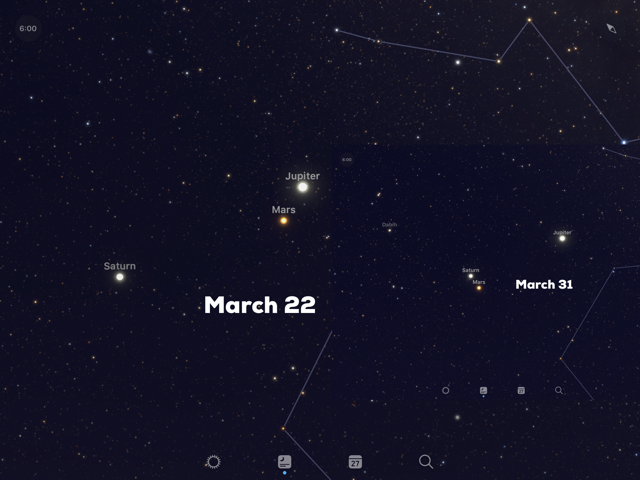 Jupiter and Saturn do not return to our evening skies until later on this summer. Mars on the other hand finally puts in a spectacular appearance in October. At its closest approach this fall, the Red Planet will be 38 million miles away making it a great target for telescope observations (at its farthest approach, Mars is over 200 million miles away).
Jupiter and Saturn do not return to our evening skies until later on this summer. Mars on the other hand finally puts in a spectacular appearance in October. At its closest approach this fall, the Red Planet will be 38 million miles away making it a great target for telescope observations (at its farthest approach, Mars is over 200 million miles away).
So, take advantage of this month’s planetpalooza and get outside to look up in both awe and wonder.